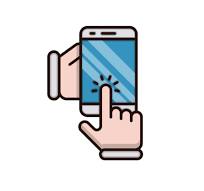
Cleaning Up: Include the Smart Phone!
Food safety consultants emphasize the need to keep monitoring lists, logs and schedules, for fear of missing an important area or concern. Cleaning schedules, for instance, should be constantly revised as audits show incomplete cleaning jobs or new cleaning concerns. The failure to do so can lead to biofilms, invisible barriers under which bacteria can hide and grow.
Every food service worker knows about cleaning and sanitizing food contact utensils, equipment and surfaces. What about some of the non-food contact surfaces used every hour, every day? They still can hide bacteria which can, in turn, be a source of cross contamination. What about pens, pads of paper, door handles and the smart electronic devices, phones, tablets and laptops? Only some can be cleaned and sanitized properly while using others will require hand washing. Still they must be considered on any cleaning schedule.
Food Safety News (5/23/24) summarizes a study from Ireland about this very concern: smart phones and tablets. 51 food workers were observed while preparing foods with raw chicken, raw eggs and produce (side salad). Recipes were available either in video or written format. One-third of the workers did not wash their hands between handling raw chicken and their smart device. Three-quarters of the workers did not wash their hands between handling raw eggs and their smart phones. One fifth of the workers wiped their phones or tablets during cooking but they used a cloth or sleeve to do so. Obviously workers touched their smart devices a number of times to check the recipes. Analysis after the exercise showed that six percent of precleaned devices contained pathogenic contamination. It also showed that both E. Coli and Salmonella survived on the smart devices 24 hours at room temperature.
Conclusions:
1. Smart devices are clearly a contamination source; however they are used, even if they remain in the food service. Be certain they are clean and sanitary before and after use and avoid touching them any more than needed. Wipe them with a sanitized cloth. After that, wash your hands.
2. Use hands free controls, remote controls or a stylus if they are available.
3. Review recipes prior to the start of cooking. If possible, use a printed one page recipe on a card to avoid any hand contact. If needed, ask a co-worker for help.
4. Assign one worker to use the phone to take orders, order supplies or other similar tasks.
